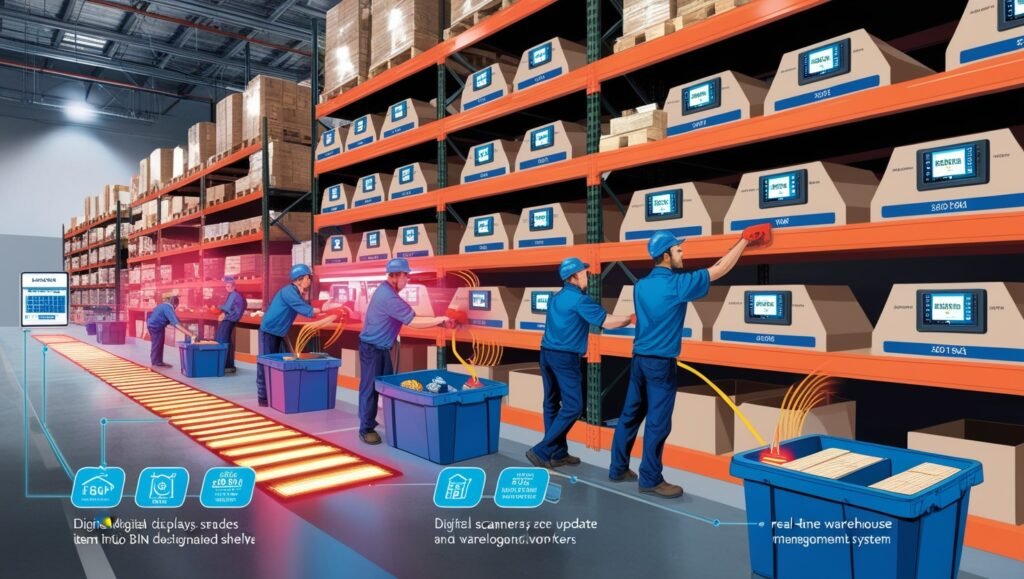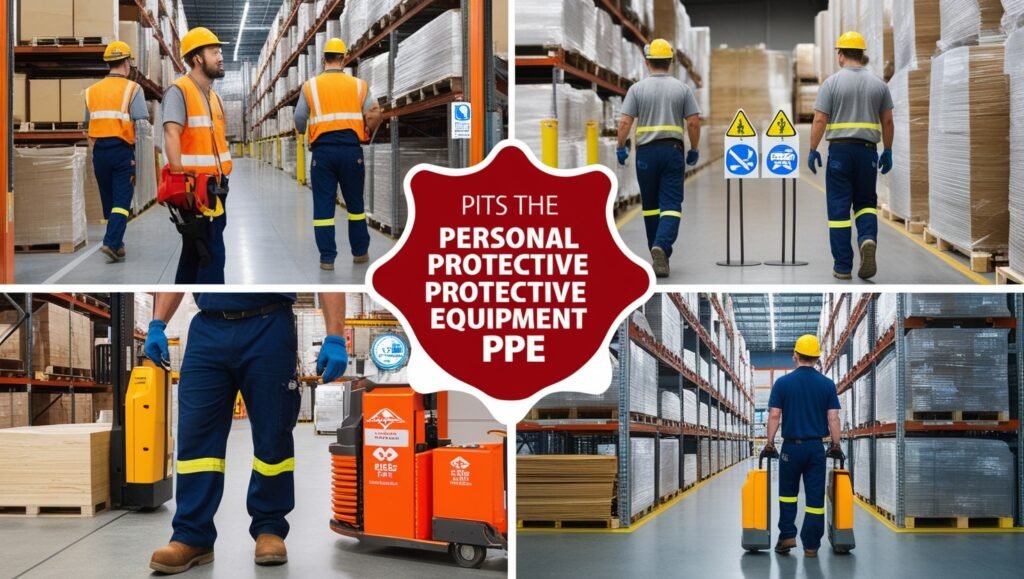- Introduction
- What is Put-to-Light Automation?
- Benefits of Put-to-Light Automation
- Real-world applications
- Challenges and Considerations
- The Future of Put-to-Light Automation
- Conclusion
- Frequently Asked Questions
- What is put-to-light automation?
- How does put-to-light automation work?
- What are the benefits of put-to-light automation?
- Which industries benefit from put-to-light automation?
- What are the challenges associated with put-to-light automation?
- How does put-to-light improve accuracy?
- Can put-to-light systems be scaled?
- What is the initial cost of implementing put-to-light automation?
- How does put-to-light integrate with existing systems?
- What kind of maintenance does PTL systems require?
- How does PTL technology affect the training time of new operators?
- What is the future of PTL automation?
- Are there any special considerations for implementing PTL systems in warehouses?
- Can put-to-light systems handle a variety of items?
- How do PTL systems contribute to real-time inventory management?
- What are the main differences between put-to-light and pick-to-light systems?
Introduction
The logistics and warehousing industry is witnessing a technological revolution, driven by the need for greater efficiency, accuracy, and productivity. Among the various innovations transforming this sector, put-to-light automation has emerged as a game-changer. This technology, which enhances the order fulfillment process, is becoming popular for its ability to streamline operations and reduce errors. In this blog, we will learn about the intricacies of PTL automation, its benefits, and its impact on modern warehousing.

What is Put-to-Light Automation?
PTL automation is a system that uses light indicators to guide warehouse operators in placing items in designated compartments or locations. This technology is typically employed in order fulfillment processes, where items need to be sorted and organized quickly and accurately. The system includes a combination of light displays, barcode scanners, and software that directs operators to the correct bins or shelves to place items.
How Does Put-to-Light Work?
Order Processing: When an order is received, the warehouse management system (WMS) generates a list of items to be picked.
Item Scanning: Operators scan the barcode of the item to be picked, which is linked to the order in the WMS.
Light Guidance: The PTL system then illuminates the appropriate bins or shelves where the items should be placed, often with an accompanying alphanumeric display showing the items to be placed.
Confirmation: After the item is placed, the operator confirms the action by pressing a button near the light indicator. This updates the WMS in real time.
Benefits of Put-to-Light Automation
Increased Accuracy: By guiding operators with a visual indicator, PTL reduces the likelihood of placing items in the wrong locations, thus reducing errors.
Increased productivity: The system speeds up the sorting process, allowing operators to work more efficiently and handle a greater volume of orders.
Scalability: PTL systems can be easily scaled to accommodate increases in order volume, making them ideal for businesses experiencing rapid expansion.
Reduced training time: The in-built nature of light-guided systems simplifies training for new operators, reducing onboarding time and costs.
Real-time inventory management: Integration with WMS ensures real-time updates to inventory levels, providing accurate data for inventory management and forecasting.
Real-world applications
Many industries have adopted PTL automation to enhance their warehousing operations. Here are some examples:
E-commerce: With the boom in online shopping, e-commerce warehouses benefit from put-to-light systems to efficiently manage large volumes of small, diverse orders.
Retail: Retail distribution centers use put-to-light to ensure accurate sorting and delivery of products to stores, maintaining inventory levels, and meeting consumer demand.
Pharmaceuticals: The pharmaceutical industry leverages put-to-light for its accuracy and reliability, ensuring the right medication is placed in the right order, which is critical to patient safety.
Automotive: Automotive parts warehouses use PTL to manage a diverse range of parts, ensuring they are correctly sorted and ready for shipment.

Challenges and Considerations
While PTL automation offers many benefits, there are a few challenges and considerations to keep in mind:
Initial Investment: The upfront cost of implementing a PTL system can be significant. However, the long-term benefits often justify the investment.
System Integration: Ensuring seamless integration with existing WMS and other warehouse technologies is critical for optimal performance.
Maintenance and Upgrades: Regular maintenance and periodic upgrades are essential to keep systems running smoothly and taking advantage of technological advancements.
The Future of Put-to-Light Automation
As technology continues to evolve, PTL systems are expected to become even more sophisticated. Innovations such as artificial intelligence and machine learning can further enhance the efficiency and accuracy of these systems. Additionally, advances in IoT (Internet of Things) and smart warehousing will likely lead to more integrated and automated solutions, making PTL a cornerstone of future warehousing operations.

Conclusion
PTL automation is transforming the warehousing industry by improving accuracy, productivity, and scalability. Its intuitive, light-guided system simplifies the order fulfillment process, making it an invaluable tool for a variety of industries. As technology advances, the future of PTL automation looks promising, offering even more potential to increase warehousing efficiency and meet the demands of a rapidly changing market.
Frequently Asked Questions
What is put-to-light automation?
PTL automation is a technology used in warehousing to streamline the order fulfillment process. It uses light indicators to guide operators in placing items in the correct bins or locations, ensuring accuracy and efficiency.
How does put-to-light automation work?
Order processing: The warehouse management system (WMS) generates a list of items to be picked.
Item scanning: Operators scan the barcodes of the picked items.
Light guidance: Light indicators illuminate the correct bins or shelves where the items should be placed.
Confirmation: Operators confirm placement by pressing a button, causing the WMS to update in real time.
What are the benefits of put-to-light automation?
Increased accuracy: Reduces placement errors.
Increased productivity: Speeds up the sorting process.
Scalability: Easily adapts to growing order volumes.
Reduced training time: Intuitive system simplifies operator training.
Real-time inventory management: Provides accurate, real-time inventory updates.
Which industries benefit from put-to-light automation?
E-commerce: Efficiently handles large volumes of different orders.
Retail: Ensures accurate distribution of products in stores.
Pharmaceuticals: Guarantees accurate sorting of medicines.
Automotive: Accurately manages different parts.
What are the challenges associated with put-to-light automation?
Initial investment: High upfront cost.
System integration: Requires seamless integration with existing WMS and technologies.
Maintenance and upgrades: Requires regular maintenance and periodic upgrades.
How does put-to-light improve accuracy?
The system uses visual indicators to guide operators to the correct location, reducing the chance of human error in placing items.
Can put-to-light systems be scaled?
Yes, PTL systems can be easily scaled to accommodate increasing order volumes, making them suitable for businesses experiencing rapid growth.
What is the initial cost of implementing put-to-light automation?
While the initial cost can be significant, the long-term benefits such as increased productivity and accuracy often justify the investment.
How does put-to-light integrate with existing systems?
PTL systems are designed to integrate seamlessly with warehouse management systems (WMS) and other warehouse technologies, ensuring smooth operations.
What kind of maintenance does PTL systems require?
Regular maintenance and periodic upgrades are necessary to keep the system running smoothly and take advantage of technological advancements.
How does PTL technology affect the training time of new operators?
The intuitive nature of PTL systems simplifies training for new operators, significantly reducing onboarding time and costs.
What is the future of PTL automation?
Future advancements in artificial intelligence, machine learning, IoT, and smart warehousing are expected to make PTL systems even more efficient and integrated, further increasing their role in modern warehousing.
Are there any special considerations for implementing PTL systems in warehouses?
Yes, businesses should consider the initial investment, integration with existing systems, and the need for ongoing maintenance and upgrades when implementing PTL systems.
Can put-to-light systems handle a variety of items?
Yes, PTL systems are versatile and can handle a wide variety of items, making them suitable for a variety of industries with diverse product categories.
How do PTL systems contribute to real-time inventory management?
By updating the warehouse management system in real-time with each confirmed placement, PTL systems ensure accurate and up-to-date inventory data.
What are the main differences between put-to-light and pick-to-light systems?
PTL: Guides operators in placing items in compartments or locations.
Pick-to-light: Guides operators in picking items from compartments or locations for order fulfillment.
